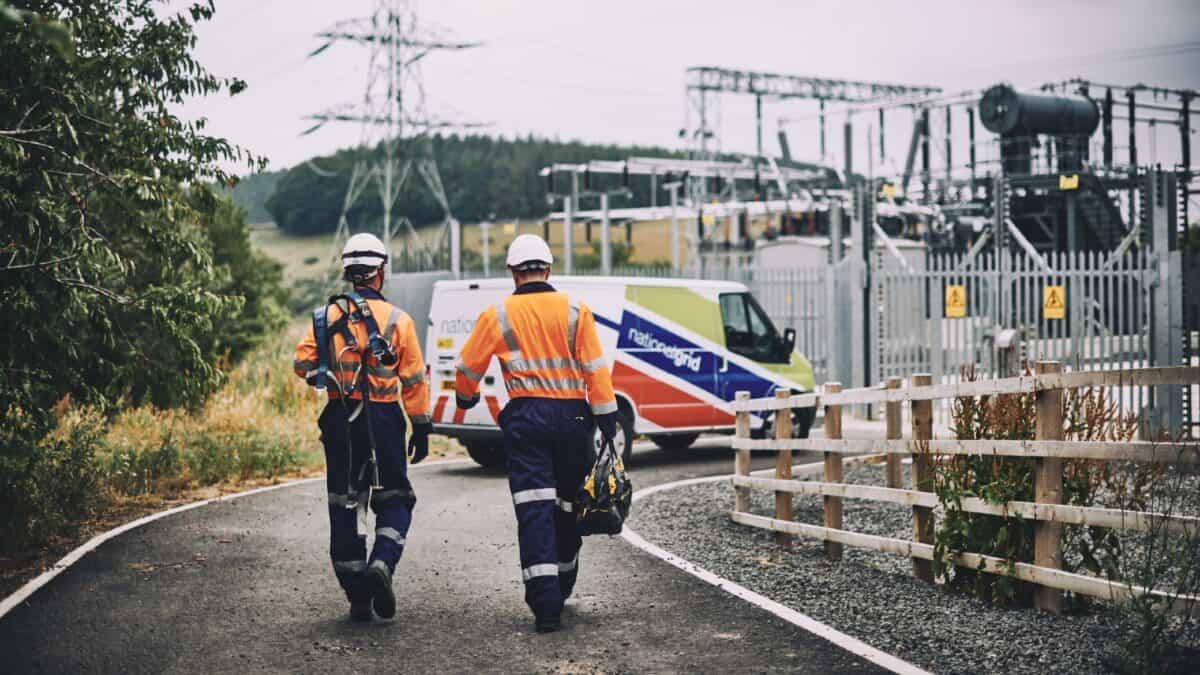There’s been volatility in the National Grid (LSE: NG) share price lately and some big developments in the business.
The company is a leading energy transmission and distribution operator with assets in the UK and the US. It’s a sector in focus because of the transition towards greener energy. But the stock’s showing weakness again. So is this an opportunity, or a sign of further potential challenges ahead?
In the recent half-year results report, chief executive John Pettigrew was upbeat. The six months to 30 September showed “exciting momentum” and an “unprecedented” step up in capital investment.
Investing for growth
Pettigrew said the £7bn Rights Issue in May supports the firm’s ability to deliver its five-year, £60bn investment plan. By the end of the first half, the company had made £4.6bn of investments already.
But without context, they’re meaningless numbers. So Pettigrew pointed to work being carried out on 17 major onshore and offshore transmission projects in the UK.
Meanwhile in the US, the company’s made progress on its $4bn Upstate Upgrade in New York. There’s also been gas mains replacement and network reinforcement “across communities“.
Pettigrew said the firm policy and regulatory progress on both sides of the Atlantic has been encouraging. For example, in July, regulator Ofgem published sector-specific decision documents for the UK electricity transmission business. The RIIO-T3 regulatory period runs from April 2026 to March 2031.
The directors said Ofgem recognises the need for an appropriate financial framework that retains and attracts capital needed as the sector steps up investment. So that may bode well for ongoing shareholder dividends.
Meanwhile, energy transition is a hot theme here in the UK under the new government. But it’s likely to be a massive and expensive task.
Part of the challenge for National Grid is the need to upgrade its infrastructure to accommodate all the grid connections for new solar and wind-generator farms.
Reshaping the business
The transition will likely cost billions — perhaps more billions than current estimates predict. Isn’t that nearly always the way of things? So one of the risks for shareholders is the possibility of another Rights Issue or fund-raising event down the road. After all, the company already carries a high debt load suggesting little room to add more.
Nevertheless, this looks like a business with a new determination to meet the needs of today’s evolving energy sector. To that end, it’s been nipping and tucking operations to achieve greater focus.
For example, in September, it sold the UK’s Electricity System Operator to the government for £630m. That deal frees the management of the responsibility and allows it to focus on the development plans.
But the company rebased the shareholder dividend lower for the current trading year onwards. Nevertheless, Pettigrew insists National Grid is delivering a new phase of growth and will maintain an “inflation protected” dividend going forward.
If that assessment proves to be correct, with the share price near 975p, investors may be looking at an opportunity to research and consider the shares for a potential long-term hold.
This post was originally published on Motley Fool







